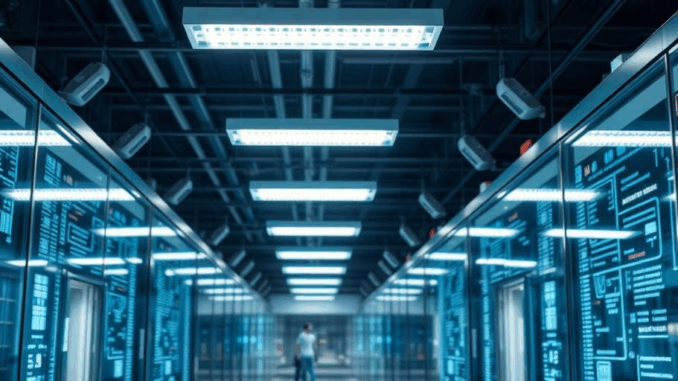
Summary
This article provides actionable steps to improve energy efficiency in existing buildings using smart technology. It covers upgrading lighting, optimizing HVAC systems, enhancing building envelopes, and utilizing smart controls and sensors. By implementing these strategies, building owners can significantly reduce energy consumption and operational costs.
Successful low-energy building design hinges on careful planning. Focus360 Energy can help.
** Main Story**
Okay, let’s talk smart buildings and energy efficiency. It’s not just about being ‘green’ anymore; it’s about saving serious money and creating a better environment for everyone. So, where do we even begin? Here’s my take:
Smart Lighting: It’s More Than Just LEDs
First off, ditch those old bulbs! Upgrading to LEDs is a no-brainer, but it’s the smart controls that really make a difference. Think about it: lights automatically dimming or turning off completely when a room is empty. You can even have them adjust based on how much natural light is pouring in. I remember working on a project where we installed occupancy sensors in a large office. The energy savings were through the roof, it was incredible. The best part? People barely noticed the change, except for the lower energy bills.
HVAC: Getting Smart About Heating and Cooling
Now, let’s talk HVAC. How many times have you walked into a building and felt like you’ve entered a different climate zone? Smart thermostats are key, but it’s about more than just setting a temperature. It’s about using intelligent controls to adjust heating and cooling based on occupancy, the time of day, and even the weather outside. And consider this: smart vents that direct airflow only to the occupied zones. It’s a game-changer, believe me. Plus, it will prevent having to walk in a building and immediately take off or put on a jacket. It feels so wasteful.
Building Envelope: Seal it Up!
Think of your building like a cozy jacket. If it’s full of holes, you’re going to feel the chill, right? Improving insulation and sealing any gaps is crucial to minimizing energy loss. Smart windows and shading systems are another brilliant idea; these will regulate natural light and reduce how much you rely on your HVAC system. I remember reading about this office building in Germany that used automated shades to track the sun and block out excessive heat. And to top it off they would automatically optimize the heating usage in winter as well. Smart, huh?
But, how do you know where the biggest energy leaks are? That’s where smart sensors and data analytics come in. They can pinpoint those areas of inefficiency so you can address them directly. And it’s all about the data, really.
Smart Controls and Sensors: The Brains of the Operation
Beyond lighting and HVAC, there are so many other ways to get smart. Smart power strips that cut off power to devices when they’re not in use? Yes, please! Integrate sensors to monitor everything from occupancy to temperature. Think of it like giving your building a nervous system. I’ve seen companies implement real-time data tracking and automated feedback loops that make it easy to identify and address energy waste. Not only that, but you can predict maintenance issues before they even arise.
And don’t forget about renewable sources! If you can, install solar panels or explore other options to generate your own clean energy. Finally, remember to actively reduce energy consumption. It starts with a plan and a commitment to sustainability, that’s all.
Seeking Expert Advice: Don’t Go It Alone
This is where I urge you to seek professional guidance, if you’re serious about this. Consult with energy efficiency experts. They can conduct a comprehensive energy audit and develop a tailored plan for your building. They can help you identify the most cost-effective upgrades and make sure everything is installed and integrated correctly. Don’t try to do it all yourself. Trust me, you’ll save time, money, and a whole lot of headaches in the long run.
Furthermore, remember that retrofitting should be about a ‘whole-building approach.’ Tackling it bit by bit won’t get you the results you want. In short, it’s all connected. And you will see that once you start diving into this.


So, if we give our buildings a nervous system, will they start developing quirks like always wanting the thermostat set to 72 or only listening to smooth jazz after 5 PM? Just curious about the long-term personality implications of smart buildings!
That’s a fun thought! I think as smart buildings learn occupant preferences, we might see some interesting customization. Imagine buildings that adjust lighting and temperature based on individual biometric data – now that’s personalized comfort! It raises exciting questions about how technology can shape our experiences within built environments.
Editor: FocusNews.Uk
Thank you to our Sponsor Focus 360 Energy